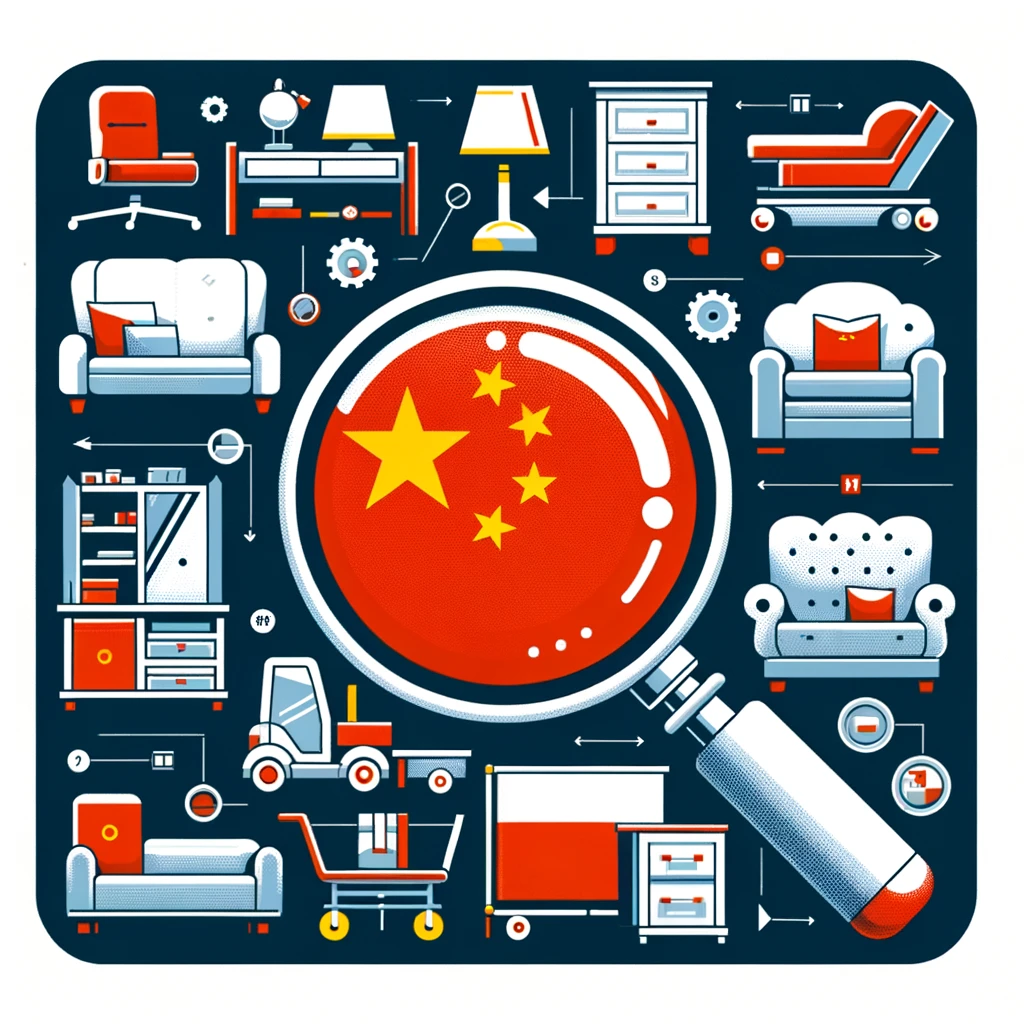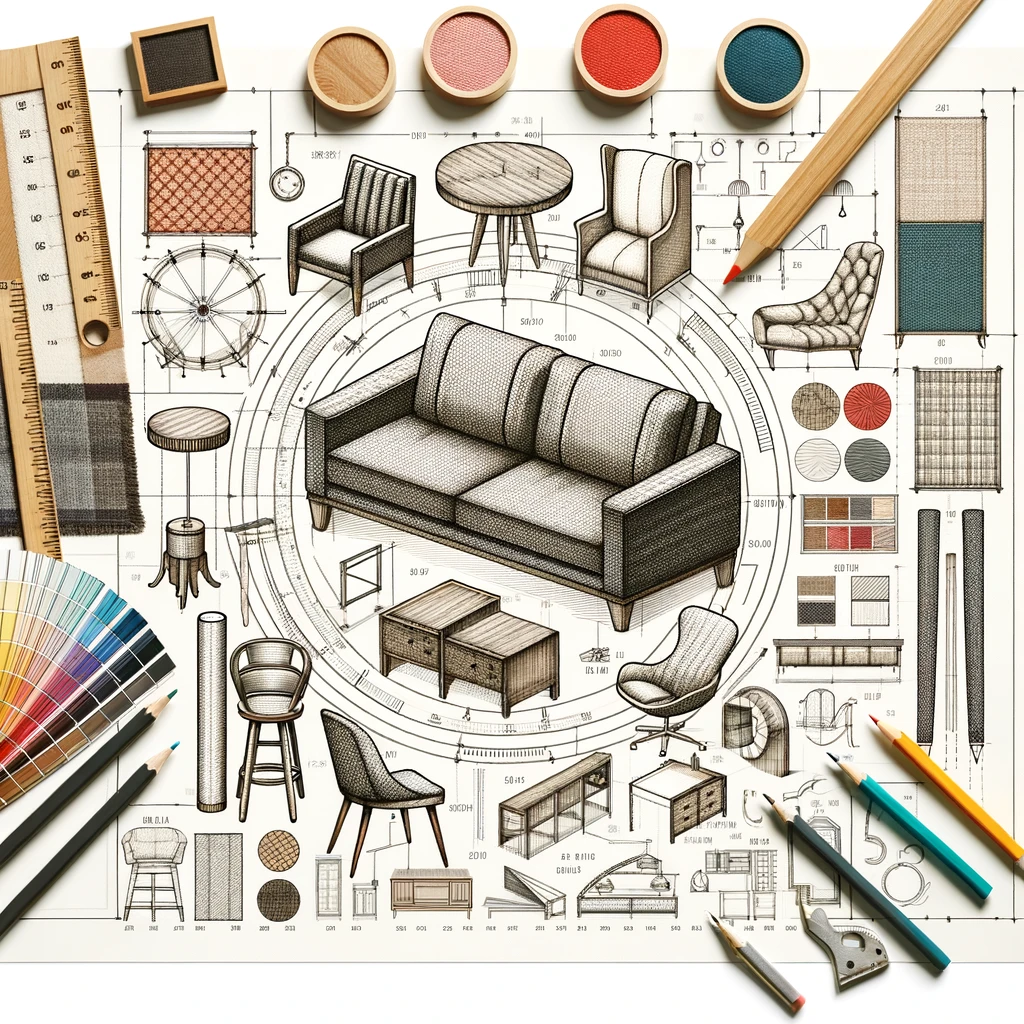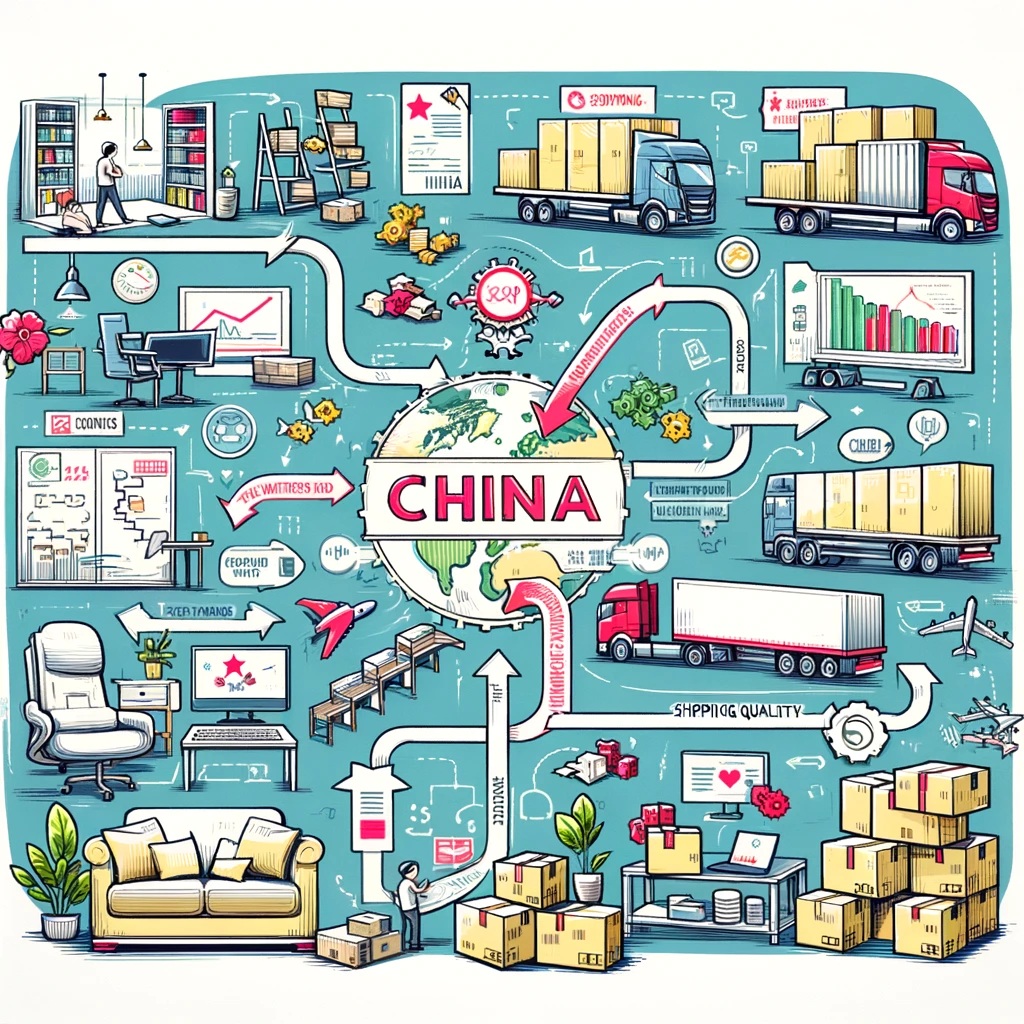Introduction
Is importing furniture from China the key to unlocking your business’s potential? This question resonates with many entrepreneurs and retailers worldwide as they explore the burgeoning furniture market in China. China’s emergence as a global leader in furniture manufacturing offers an array of cost-effective, diverse, and high-quality options for businesses looking to expand their inventory.
Overview of Furniture Import Trends from China
China’s dominance in the furniture industry isn’t just about volume; it’s about the variety and adaptability in design and manufacturing. In 2022 alone, China’s furniture exports were valued at over $50 billion, highlighting the country’s pivotal role in meeting global furniture demand. This trend underscores the opportunity for businesses to capitalize on China’s extensive furniture offerings.
Introduction to HAI International Holding
Enter HAI International Holding, a leading Chinese freight forwarder, renowned for its efficiency and expertise in navigating the complexities of international furniture shipping. HAI International Holding stands out with its commitment to customer service, transparency, and reliable logistics solutions, making it an ideal partner for businesses importing furniture from China.
In the following sections, we delve into the essentials of importing furniture from China, with insights and tips to help you successfully navigate this market.
Identifying Chinese Furniture Suppliers

How to Find Reliable Furniture Manufacturers in China
Finding a trustworthy supplier in China – is it as daunting as it seems? In the vast marketplace of Chinese furniture manufacturers, identifying a reliable and high-quality supplier is crucial. Begin your search by exploring well-known B2B platforms like Alibaba and Made-in-China, which offer extensive directories of manufacturers. However, the key is not just to find a supplier, but to find the right one. Look for suppliers with positive reviews, a proven track record, and responsive communication. Additionally, attend trade fairs such as the Canton Fair or Shanghai Furniture Fair, offering an opportunity to network and evaluate products firsthand.
Essential Tips for Selecting the Right Furniture Supplier
When it comes to selecting the right supplier, due diligence is paramount. Verify the supplier’s business license, production capabilities, and export history. Ask for references or case studies of previous international shipments. Also, consider their specialization in furniture types, whether it’s modern, traditional, or custom designs. Keep in mind, communication is key – ensure your supplier understands your needs and can offer flexible terms of cooperation.
Understanding Import Costs and Pricing for Furniture Imports

Comprehensive Breakdown: Costs of Importing Furniture from China
What are the true costs of importing furniture from China? It’s not just about the unit price of the furniture. When calculating costs, consider the FOB price (which includes the cost of the furniture and transportation to the Chinese port), shipping fees, insurance, and customs duties in your home country. A significant factor to consider is the volume of your shipment, as furniture is often bulky and can significantly affect shipping costs. For a more accurate cost estimation, consult with freight forwarders like HAI International Holding, who can provide detailed breakdowns.
Decoding Furniture Prices, Shipping Charges, Taxes, and Customs Duties
Understanding the breakdown of prices and additional charges is crucial for budgeting. Shipping charges can vary based on the mode of transport (sea, air, or land) and the distance. Taxes and customs duties are dictated by your country’s regulations and can vary widely. It’s essential to stay updated with the latest tariff rates and trade agreements between your country and China. Using a tariff calculator or consulting with a customs broker can provide clarity on these costs.
Ensuring Furniture Quality from Chinese Manufacturers

Quality Assurance: Verifying Furniture Quality in China
How can you ensure the furniture you import meets your quality standards? Establishing a quality assurance process is crucial. This can involve hiring third-party inspection services to conduct pre-shipment inspections of the furniture. These inspections can verify product specifications, quality, and safety standards, and are crucial for avoiding costly returns or dissatisfaction. Additionally, request samples before placing bulk orders to assess the quality firsthand.
Importance of Product Inspections and Certifications
Regular product inspections and obtaining the necessary certifications for your market are non-negotiable. Ensure that the furniture meets international safety and quality standards like ISO, SGS, or the European Union’s CE marking. Be particularly vigilant about standards concerning materials, durability, and safety. Certifications not only comply with regulations but also assure your customers about the quality and safety of the furniture.
These sections provide a foundational understanding of how to navigate the complexities of importing furniture from China, focusing on finding reliable suppliers, understanding the costs involved, and ensuring product quality.
Delivery Timelines for Furniture Imports

Estimated Delivery Times for Imported Chinese Furniture
How long does it take for your imported furniture to arrive from China? Understanding the delivery timelines is essential in planning your inventory and sales strategies. Generally, sea freight from China can take anywhere from 30 to 60 days, depending on the destination port. However, this timeline can vary due to factors like customs clearance, shipping schedules, and logistics efficiency. It’s important to factor in Chinese holidays, such as the Chinese New Year, which can significantly impact production and shipping schedules. Staying informed about these timelines helps in setting realistic expectations and planning accordingly.
Factors Influencing Furniture Import Timelines
Several key factors can influence the delivery time of your furniture imports. These include the type of shipping method chosen (air freight is faster but more expensive than sea freight), the distance between the Chinese port and the destination, and the efficiency of the freight forwarder. Additionally, unexpected delays can occur due to customs clearance, weather conditions, and global shipping traffic. Working with a reliable freight forwarder like HAI International Holding can help mitigate these risks and ensure smoother transit.
Minimum Order Quantities in Furniture Import

Navigating Minimum Order Requirements for Chinese Furniture Imports
Are you aware of the minimum order quantities (MOQ) when importing furniture from China? MOQ is a common practice among Chinese manufacturers, where they set a minimum number of units required for an order. This quantity can vary widely depending on the manufacturer and the type of furniture. Understanding the MOQ is crucial, as it affects both your budget and inventory management. While some manufacturers may have high MOQs, others may be more flexible, especially if you establish a good relationship or if they see potential for future business.
Strategies for Negotiating Order Quantities with Suppliers
Negotiating MOQs with Chinese suppliers requires a strategic approach. Start by communicating your needs clearly, and be open to compromise. Sometimes, suppliers may lower their MOQ in exchange for a higher price per unit or a commitment to future orders. Another strategy is to consolidate orders with other buyers to meet the MOQ requirements. Building a long-term relationship with suppliers can also lead to more favorable MOQ terms over time.
Customization Options in Chinese Furniture Manufacturing

Exploring Custom Design Possibilities with Chinese Furniture Makers
How flexible are Chinese manufacturers with custom furniture designs? One of the advantages of sourcing furniture from China is the vast array of customization options available. Many Chinese manufacturers are equipped to handle custom designs, offering flexibility in materials, sizes, colors, and finishes. This capability allows you to tailor products to your market’s specific tastes and preferences. However, it’s important to remember that customization can affect both the price and the production time of your order.
Effective Communication for Custom Furniture Orders
Effective communication is the key to successful customization. It’s crucial to provide detailed specifications and clear designs to avoid misunderstandings. Utilizing technical drawings, 3D models, or detailed product descriptions can help in conveying your requirements accurately. Additionally, discussing the feasibility of the designs with the manufacturer and understanding the impact on production time and costs will ensure that both parties are on the same page, leading to a successful transaction.
Complying with Furniture Import Regulations

Navigating Import Regulations and Compliance for Chinese Furniture
Do you know the regulatory landscape for importing furniture from China? Navigating the complex web of import regulations and compliance standards is a critical aspect of importing furniture. It involves understanding various international trade laws, safety standards, and environmental regulations. For instance, furniture imported into the EU must comply with the REACH regulations, which ensure that chemicals used are safe for health and the environment. Similarly, the U.S. has strict Lacey Act compliance, which requires importers to declare the country of origin and the legality of the wood used in furniture.
Understanding Legal Aspects of Furniture Import
The legal aspects of importing furniture can be intricate, involving tariffs, trade agreements, and customs regulations. It’s essential to stay updated on the latest trade policies, which can affect import duties and restrictions. For example, the U.S.-China trade tensions can influence tariff rates. Utilizing the expertise of customs brokers and freight forwarders like HAI International Holding can provide valuable insights into navigating these legal complexities, ensuring that your furniture imports are compliant and hassle-free.
Securing Transactions and Payments in Furniture Imports

Safeguarding Your Investment: Secure Payment Methods for Furniture Imports
How do you ensure the security of your transactions when importing furniture from China? Securing transactions and payments is paramount to safeguarding your investment. It’s advisable to use secure payment methods like Letter of Credit (L/C) or Escrow services, which offer protection to both buyers and sellers. These methods ensure that the payment is released only when the terms of the contract are met. Avoid making large payments upfront; instead, negotiate payment terms that are mutually beneficial, such as partial payments upon order confirmation and the balance upon delivery.
Transaction Security with Overseas Furniture Suppliers
In international trade, the security of transactions is a major concern. Ensuring that you are dealing with reputable suppliers and using secure payment channels is crucial. Conduct thorough background checks on suppliers and seek recommendations from industry peers. Additionally, using trade assurance services offered by platforms like Alibaba can add an extra layer of security to your transactions, ensuring that you receive the product as per the agreed quality and timeframe.
Logistics and Shipping Best Practices

Optimizing Logistics and Shipping for Furniture Imports from China
What are the best practices for optimizing logistics and shipping in furniture imports? Effective logistics management is key to a successful import process. This includes choosing the right mode of transport, understanding the best shipping routes, and managing the timing and costs effectively. For bulky items like furniture, sea freight is often the most cost-effective option. However, planning ahead for peak shipping seasons and considering consolidation services can lead to significant cost savings and more efficient shipping.
How HAI International Holding Facilitates Smooth Furniture Import
HAI International Holding, with its extensive expertise in freight forwarding, plays a crucial role in facilitating smooth furniture imports from China. They offer customized logistics solutions, taking into account the size, urgency, and budget of your shipment. Their services include everything from cargo consolidation to customs clearance, ensuring that your furniture arrives at its destination in a timely and cost-effective manner. HAI International Holding’s understanding of local and international shipping regulations makes them an invaluable partner in your furniture import journey.
Securing Transactions and Payments in Furniture Imports

Safeguarding Your Investment: Secure Payment Methods for Furniture Imports
How do you protect your finances when dealing with overseas suppliers? When importing furniture from China, securing your transactions is crucial. Using secure payment methods like Letters of Credit (L/C) or Escrow services offers a shield against fraud and non-delivery. These methods create a trust barrier, ensuring that your payment is released only when specific conditions are met. It’s crucial to avoid large upfront payments; instead, negotiate terms that involve a small deposit and the remainder upon delivery. This approach significantly reduces financial risks while keeping the supplier committed.
Transaction Security with Overseas Furniture Suppliers
Navigating the intricacies of international payments requires a careful approach. It’s important to conduct due diligence on the supplier, verifying their credibility and track record. Utilize bank references and credit reports, and consider hiring a local agent or using third-party verification services. Secure payment channels and clear contract terms will protect against misunderstandings and financial losses, ensuring a smooth and secure transaction.
Logistics and Shipping Best Practices

Optimizing Logistics and Shipping for Furniture Imports from China
What strategies can ensure efficient and cost-effective shipping? Optimizing logistics for furniture imports from China involves more than just finding the cheapest shipping rates. It requires a balance of speed, cost, and reliability. Sea freight is often the most economical option for bulky items like furniture, but it’s slower than air freight. Understanding and planning around peak shipping seasons and leveraging cargo consolidation services can lead to significant savings. Regular communication with your freight forwarder, like HAI International Holding, can help anticipate and resolve potential issues, ensuring timely delivery.
How HAI International Holding Facilitates Smooth Furniture Import
Partnering with a seasoned freight forwarder like HAI International Holding can be a game-changer. They specialize in handling the complexities of furniture imports, offering customized logistics solutions that consider size, urgency, and budget constraints. HAI International Holding’s services, including cargo tracking, customs clearance, and local transportation coordination, ensure a seamless import process. Their deep understanding of both local and international shipping regulations and practices is invaluable for navigating the logistical challenges of furniture import.
Overcoming Language and Cultural Barriers in Import Business

Effective Communication with Chinese Furniture Suppliers
How do you bridge the communication gap in international trade? Effective communication is key when dealing with Chinese furniture suppliers. Language barriers can lead to misunderstandings and errors in transactions. Employing a bilingual agent or using professional translation services can be immensely helpful. It’s also beneficial to use clear and concise language in all communications and to confirm understanding on both sides. Regular meetings and site visits, if possible, can strengthen relationships and improve communication.
Cultural Insights for Successful Business Transactions in China
Understanding the cultural nuances of doing business in China can significantly enhance your trading relationships. The Chinese business culture places a high value on trust and long-term relationships. It’s important to show respect, patience, and willingness to understand local business practices. Be aware of cultural customs like gift-giving and the significance of “Guanxi” (relationships) in business dealings. Navigating these cultural aspects with sensitivity and awareness can lead to more fruitful and lasting business partnerships.
Insurance and Warranty for Imported Furniture

Understanding Insurance and Warranty Options in Furniture Import
What kind of insurance and warranty options should you consider when importing furniture from China? When dealing with international shipments, it’s crucial to understand the types of insurance coverage available to protect against loss or damage during transit. Typical insurance options include All-Risk Coverage and Total Loss Coverage. Additionally, understanding the warranty offered by the Chinese manufacturer is key. This can include guarantees against defects in materials and workmanship. Ensure you have a clear understanding of the terms and conditions of these warranties, and how they align with your business needs and customer expectations.
Assessing the Need for Additional Coverage
Deciding whether to opt for additional insurance or extended warranties involves assessing the risk factors associated with your shipment. Factors like the value of the furniture, the shipping route, and the duration of transit play a crucial role in this decision. Remember, the cost of insurance is often a small price to pay for the peace of mind it offers, especially when dealing with high-value or fragile items. Consult with your freight forwarder, like HAI International Holding, to understand the best options for your specific needs.
Conclusion
Key Takeaways for Successful Furniture Import from China
To wrap up, successful furniture importing from China hinges on understanding and managing several key factors. From finding reliable suppliers and comprehending import costs to ensuring quality and navigating logistics, each aspect plays a vital role in a smooth import process. It’s essential to stay informed about regulatory requirements, secure your financial transactions, and be aware of cultural nuances in business dealings. By addressing these areas diligently, you can significantly enhance the efficiency and profitability of your furniture import business.
Partnering with HAI International Holding for Efficient Import Processes
HAI International Holding’s expertise in freight forwarding can greatly simplify your furniture importing journey. Their comprehensive services, including logistics management, customs brokerage, and shipment tracking, provide a reliable and efficient way to navigate the complexities of importing furniture from China.
FAQs
How Can You Identify Trustworthy Furniture Manufacturers in China?
To ensure reliability, thoroughly research potential suppliers. Use established B2B platforms like Alibaba, attend industry trade shows like the Canton Fair, and seek testimonials or references. Check for certifications, production capabilities, and export history.
What Comprises the Total Cost of Importing Furniture from China?
The total cost includes not just the purchase price, but also shipping fees, customs duties, and taxes. Additionally, consider insurance costs and potential inspection fees. Costs can vary based on shipment volume, transportation method, and destination country.
How Do You Assure the Quality of Furniture Imported from China?
Establish a quality assurance process that includes pre-shipment inspections by third-party agencies. Request product samples before placing large orders, and ensure that the products meet relevant safety and quality certifications for your market.
What Are Typical Shipping Times for Furniture from China?
Shipping times can vary widely. Sea freight often takes 30 to 60 days, but factors like the chosen shipping line, route, and customs clearance can affect this. Additionally, consider potential delays during Chinese holidays or global events.
Is Customization Feasible with Chinese Furniture Manufacturers?
Yes, many Chinese manufacturers offer extensive customization options. This can include changes in design, materials, sizes, and colors. Ensure clear communication of your requirements, possibly supported by technical drawings or detailed specifications.












